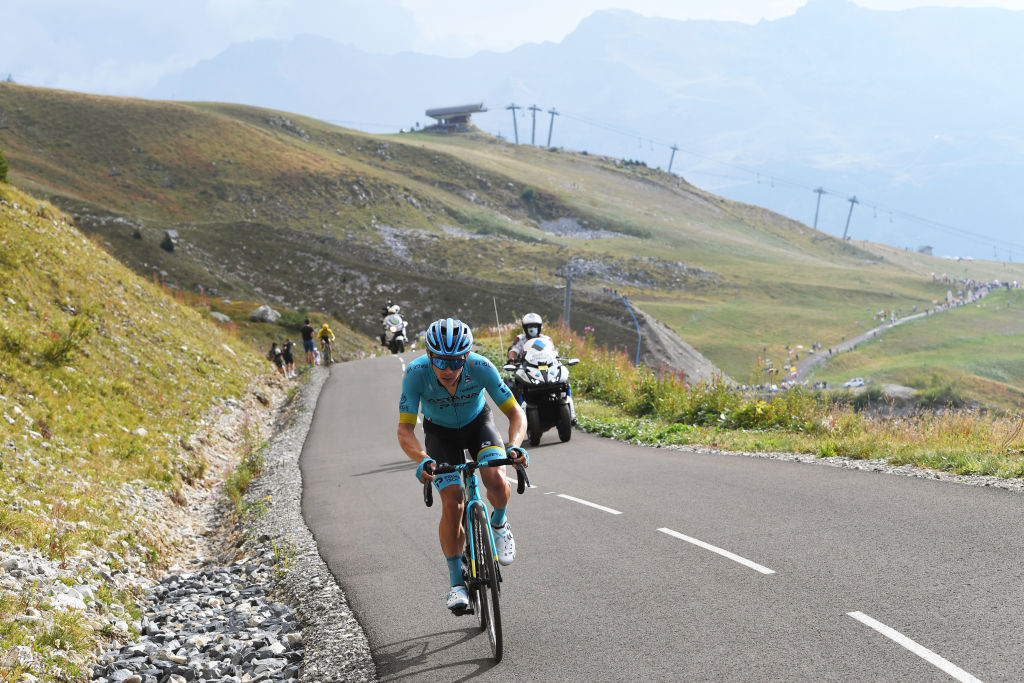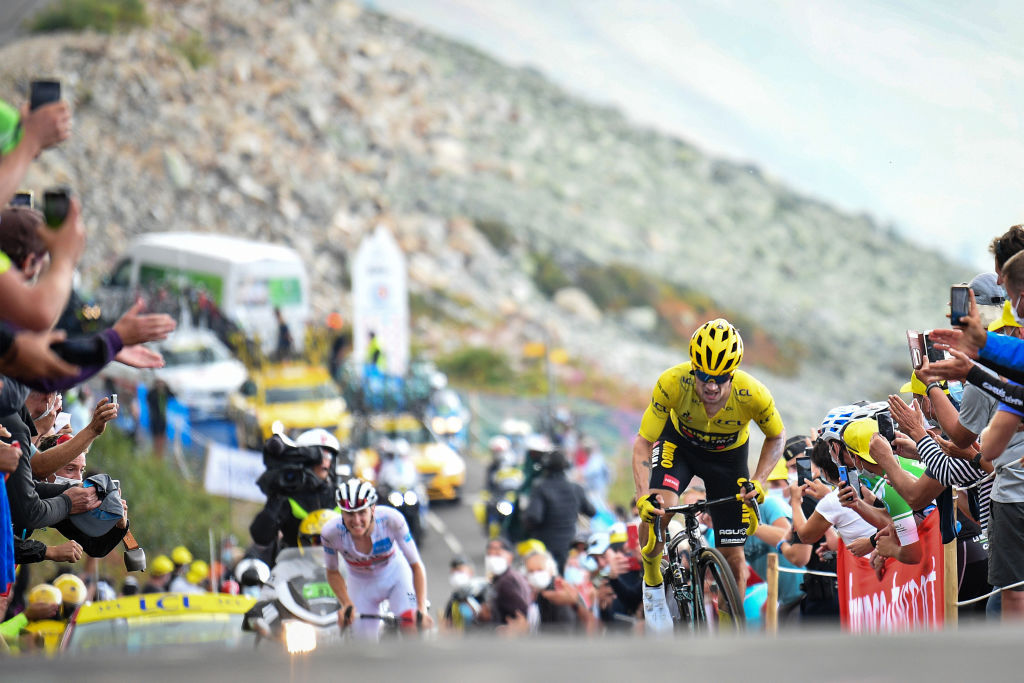
The Col de la Loze was destined to feature at the pinnacle of the Tour de France as soon as the asphalt was laid here in 2019 and after its 2020 debut, the new 'monster' of the Alps is back.
It may be a Tour de France climb without the historic status of L'Alpe d'Huez or Mont Ventoux and it has only appeared once in cycling's most prestigious race, but it’s slowly beginning to build that mythical reputation due to its unrelenting gradients up to high altitude.
It’s 28.1km in length this time and ascends out of the valley from Brides-les-Bains in the French Alps with the easiest slopes arriving in the first half before they turn out of the ski resort, Meribel, and head onto the hellish slopes towards the summit.
The average gradient for the climb measures in at 6%. However, that doesn't at all paint the full picture, with each of the final 5km averaging over 9% on a mix of hairpins and straight ramps. The final 2km come on a long, exposed road where you can see your rivals ahead of you if you've been dropped and this is where the toughest gradients are contained, topping out on inclines of up to 24%.
Riders complained in its debut of their rhythm being broken due to the irregularity of the gradients. Without the legs, you will be found out.
The Col de la Loze will return this year and serve as the highest point in the 2023 Tour at 2,304m, where the first rider to cross the summit will win the Souvenir Henri Desgrange, the prize that honours the man, who alongside Géo Lefèvre, created the Tour de France.
Altitude is another issue for the riders to contend with and the oxygen debt will give those struggling no place to hide. Once you go above the 2,000m mark, you are into the extreme zone and at 2,304m the finale of the Col de la Loze will likely be the hardest climb of the Tour.

On its debut appearance on stage 17 of the 2020 race, it was conquered by Miguel Angel López, as Primož Roglič (Jumbo-Visma) dropped Tadej Pogačar (UAE Team Emirates) and strengthened his grip on the yellow jersey before dramatically losing it in the final time trial to his Slovenian compatriot.
López was born above 2,500m altitude so had the advantage of growing up and training at similar heights, on similarly difficult roads. He won't repeat the feat however after a controversy-filled end to the season put him out of the World Tour.
Only four riders finished within a minute of López on that day, Roglič, Pogačar and climbing super-domestique, Sepp Kuss (Jumbo-Visma). The rest of the field finished in ones and twos after tackling the beast that is the Col de la Loze, so expect similarly big gaps this year.
Pogačar was only distanced by Roglič in the final 2.2km and was able to limit his losses to 15 seconds before launching his monumental assault of the Planche des Belles Filles on the stage 20 time trial that saw him snatch victory at the final moment.
The hors catégorie Col de la Loze was used in tandem with the equally brutal Col de la Madeleine (15.8km at 8.1%) in 2020, whereas in 2023 it will be the fourth categorised climb on an exorbitantly savage queen stage.
Throughout stage 17’s 165.7km route, the riders will complete the Col des Saises (13.4km at 5.1%), the Cormet de Roselend (19.9km at 6%) and the Côte de Longefoy (6.6km at 7.5%) before undertaking the arduous ascent of this brutal mountain pass for a total of more than 5,000m elevation gain. It should be one of the hardest Tour de France stages ever.
In contrast to 2020, the riders will not stop once they reach the summit but will have to descend 6km towards Courchevel on technical roads, before a final kick up the finish line at the altiport.
Padding will be used on dangerous corners of the descent and ASO will have warning audio signs before corners as part of the new safety concerns implemented following the tragic death of Gino Mäder at the Tour de Suisse.
The Col de la Loze has only been available for use since 2019 when a narrow bike path was paved to connect Méribel and the finish location for stage 17 of this year's Tour, Courchevel. The only other time it has featured in a bike race was at the 2019 Tour de l'Avenir where Australian Alexander Evans took victory.
We saw Jonas Vingegaard (Jumbo-Visma) make the difference against two-time Tour winner Pogačar on the high-altitude stage in last year's race which saw both the Col du Galibier and Col du Granon used. Both climbs are above 2,400m altitude and may provide a similar blueprint for Vingegaard and Jumbo-Visma to try and distance their key rival in 2023 again in the high mountains.







